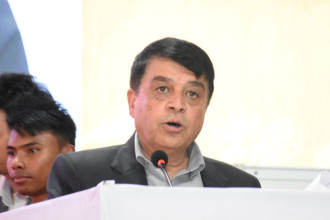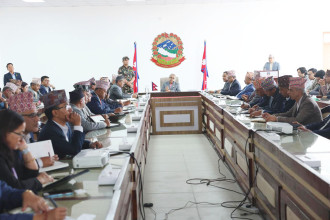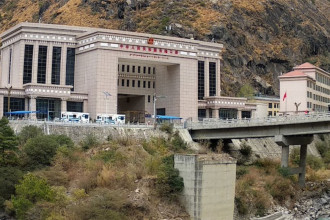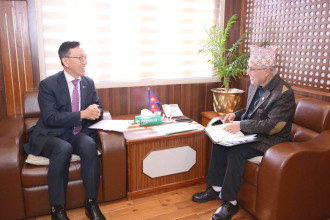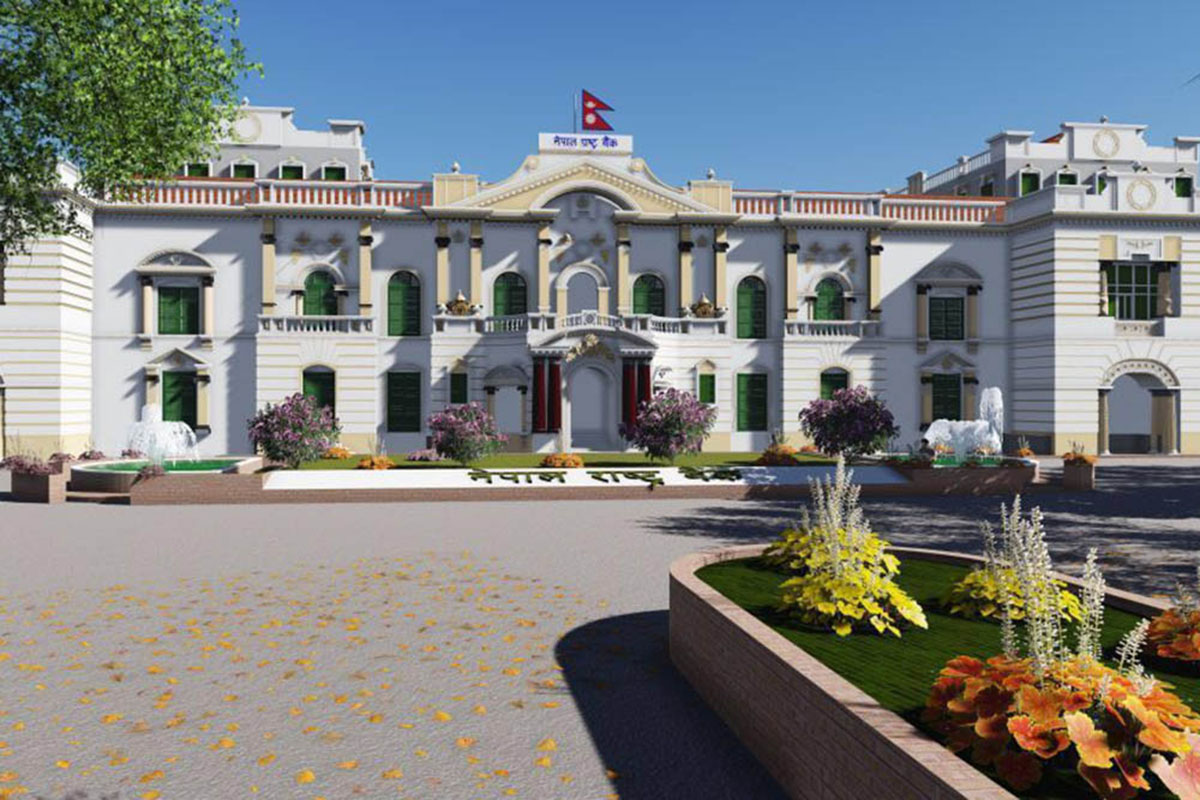
KATHMANDU: Nepal Rastra Bank (NRB) today released the first quarterly review of the monetary policy for the current fiscal year 2024/25. The policy, announced on July 26, aims to maintain price stability and balance of payments stability to support economic stability and sustainable development.
The first quarterly review assesses the implementation status of the monetary policy up to the first quarter, considering both internal and external economic and financial situations and the overall macroeconomic scenario. Monetary management policies have been adopted to keep inflation around 5.0%. The average consumer inflation for the first three months was 4.26%. From mid-September to mid-October, the price increase in the food and beverages category was 7.18%, and in non-food and services category, it was 3.49%, making the annual consumer inflation 4.82%.
NRB stated that the monetary policy aims to maintain foreign exchange reserves sufficient to cover at least seven months of imports of goods and services. As of mid-September to mid-October, the reserves were enough to cover 14.6 months of imports. The policy to maintain the upper limit of the interest rate corridor at 6.5%, down from 7%, and the policy rate at 5.5%, up from 5.0%, has been implemented. The weighted average interbank rate of banks and financial institutions (BFIs) in the first quarter of the fiscal year 2024/25 was 3%.
In the first three months until mid-October, the current account was in surplus by Rs 111.87 billion, and the balance of payments position was in surplus by Rs 184.99 billion. In the corresponding period of the previous fiscal year, the current account was in surplus by Rs 59.65 billion, and the balance of payments by Rs 101.66 billion.
According to data from the Financial Comptroller General Office (FCGO), the total expenditure of the federal government in the first quarter of the fiscal year 2024/25 increased by 17.3%, and revenue mobilisation by 13.3%. Out of the total expenditure of Rs 329.2 billion by the Government of Nepal during this period, recurrent expenditure was Rs 229.85 billion, capital expenditure was Rs 29.37 billion, and financial management expenditure was Rs 69.97 billion. The total revenue mobilisation of the government during the review period (including the amount distributed to the provincial and local governments) was Rs 248.26 billion. During this period, the government mobilised a total of Rs 136.32 billion in debt, including Rs 115 billion domestically and Rs 21.32 billion externally.
Broad money supply grew by 13.3% on an annualised basis from mid-September to mid-October 2024, compared to 13.9% in the corresponding period of the previous year. Credit flow from BFIs to the private sector grew by 6.0% on an annualised basis, compared to 4.8% in the corresponding period of the previous year. Deposits with BFIs grew by 12.8% on an annualised basis, compared to 14.9% in the corresponding period of the previous year.
The non-performing loan ratio of BFIs increased from 3.66% from mid-September to mid-October 2023 to 4.42% from mid-September to mid-October 2024. Commercial banks had a non-performing loan ratio of 4.28%, development banks had a ratio of 4.37%, and finance companies had a ratio of 10.84%.
The NRB has been managing liquidity in a way that supports economic growth from available resources by analysing the situation of inflation and foreign exchange reserves. Based on the current state of the economy, the level of foreign exchange reserves and the analysis of inflation, the prudent and flexible monetary policy stance for the fiscal year 2024/25 has been continued. The existing policy rate has been kept unchanged at 5%, the deposit collection rate at 3%, and the bank rate at 6.5%. The required cash balance and the statutory liquidity ratio have also been kept unchanged.
The central bank expects the continuation of the monetary policy stance to further support the expansion of economic activities while maintaining price stability and external sector stability, thereby helping to achieve the economic growth target set by the Government of Nepal.
The National Statistics Office (NSO) estimates that economic growth in the fiscal year 2023/24 will be 3.87% in consumer prices, up from 1.95% in the previous fiscal year. The increase in tourist arrivals, use of tourism infrastructure, expansion of the IT sector, progress in hydropower projects, and reconstruction of damaged projects are expected to boost overall demand, aiding in achieving the targeted economic growth for the current fiscal year.
Likewise, inflation has remained within the target range until the first quarter of the current fiscal year. However, food inflation in India remains high, and there are risks of supply chain disruptions due to geopolitical tensions and the Russia-Ukraine war. With the increase in remittance inflows, foreign exchange reserves are capable of supporting imports of goods and services for 14.6 months. The NRB expects favourable foreign exchange reserves for the rest of the fiscal year due to an increase in Nepalis going for foreign employment and rising remittance inflows.



